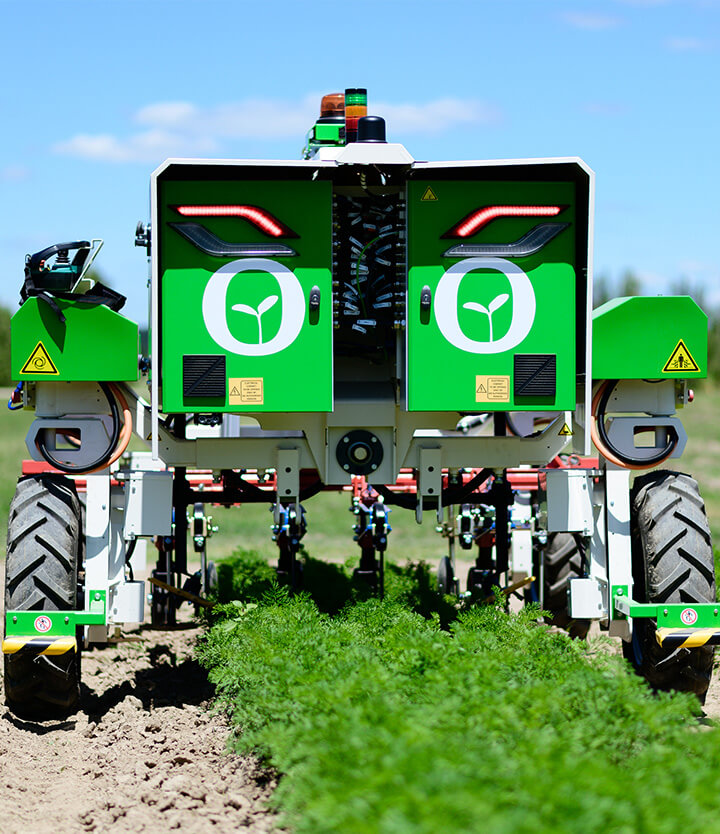Naïo Technologies recently launched the second version of Ted, their straddling weeding robot for vineyards. This model was developed to be more robust, with enhanced engine power and traction capacity. It can now work in all types of vineyards.
Thibault Delcroix, product manager for Ted at Naïo Technologies, gives us the lowdown on the different kinds of tools that can be used with the robot, their manufacturers and their effect on the in-row and inter-row areas.
Leave it to the experts
Naïo Technologies’ expertise lies firmly in robotics. So when it came to kitting Ted out with the right tools, it made perfect sense to team up with market specialists in viticulture equipment – not least because some of them have over 100 years of experience in soil and vineyard maintenance.
This strategy means that Ted is always developed using the most trusted tools in the wine industry. It also represents a significant advantage for the winegrowers themselves, because they are able to choose tools from their preferred brands. In some cases, this is the same brand they would have used previously with towed machinery.
To improve performance and increase throughput, the robot is equipped with a tool holder that can work in combination with two different tools: one at the front and one at the rear.
More than 20 tools to choose from
Naïo Technologies has built partnerships with around 20 manufacturers of towed mechanical tools. These tools fall into five main families:
– Ploughshares, with recognised brands such as Boisselet. The tool can be used at the end of winter to work under the vines, with a forward speed of 2–3 km/h. Its role is to break up and restructure the soil.
– Crenellated discs. The Vitimeca models move at over 5 km/h. They hoe and stir the earth to produce a slight hilling effect. They are recommended as a preparatory step before the inter-plant hoeing blades.
– Inter-plant hoeing blades. Souslikof’s Decalex-Binalex blades hoe, crumble the soil and cut weed roots horizontally under the vines. Depending on the setting of the angle of attack and the inclination, the tool can work at depths of 5–10 cm.
– Star inter-plant hoeing blades. The most well-known are the K.U.L.T. Kress fingerweeders. They are among the brand’s longstanding partners. They hoe under the vines at a speed of more than 5 km/h and gently earth up the plant row to cover weeds with soil. They work effectively on loose soil and are widely used on young plantings. As with finger rollers, they work without a probe, which helps prevent damage to the vine stock.
– Finger rollers. The Clemens models work at high speeds of up to 6 km/h. They crumble and break up lumps. The soil is loosened and weeds are destroyed by cutting the roots.
Rethinking the robot with versatility in mind
The modifications to Ted version 2.0 were designed to make the robot even more multifunctional. The challenge is to be able to attach heavier, motorised tools.
Ted currently works with mechanical tools, but Thibault Decroix has announced the first tests with electric tools for next season. “This means that winegrowers will be able to work with the robot from March to November, as tasks such as mowing, debudding, and even seeding can be integrated.”
The product manager also confirmed that it would be possible to combine a mechanical tool with an electric tool on the tool holder. The objective is clear: to generate an even better return on investment by enabling the robot to be used with various tools over a longer period of time in the year.





